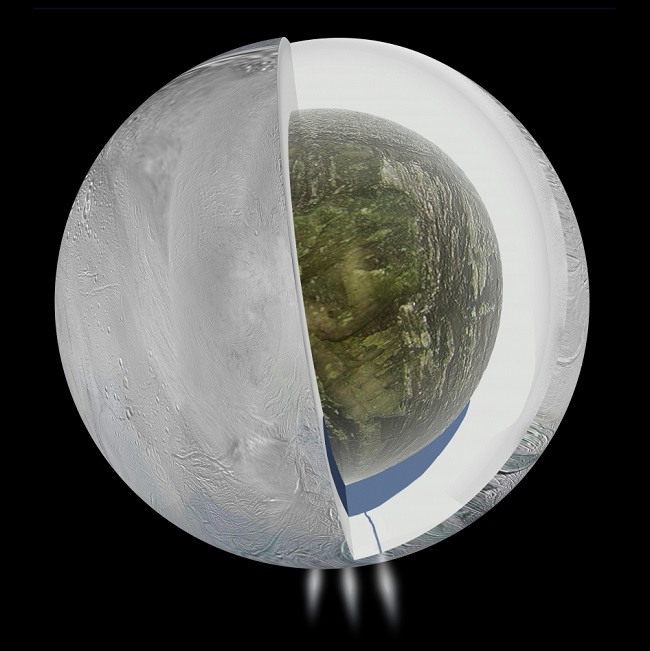
Recent evidence obtained by NASA’s Cassini spacecraft and Deep Space Network reveals a vast underground ocean of liquid water beneath Saturn’s Enceladus moon. The findings not only confirm a theory proposed in 2005, hypothesizing the presence of water beneath the 19 to 25 mile crust, but also provide the first geophysical measurements of the internal structure of Enceladus.
The data was derived by using the Doppler Effect to measure gravitational variations (change in wave frequency for an observer moving relative to the wave source); similar to how radar-guns measure speed. “As the spacecraft flies by Enceladus, its velocity is perturbed by an amount that depends on variations in the gravity field that we're trying to measure. We see the change in velocity as a change in radio frequency, received at our ground stations here all the way across the solar system,” said Sami Asmar of NASA’s Jet Propulsion Laboratory in Pasadena, Ca., coauthor of journal.
Scientists can measure the altered radio wave signal transmitted between Cassini and the Deep Space Network to deduce changes in velocity as minor as one foot per hour or 90 microns a second. Data collected during three of Cassini’s trips past Enceladus between 2010 and 2012 showed a gravitational tug altered Cassini’s flight trajectory, suggesting the presence of mountains on the surface and a variation in underground composition.
By interpreting this data it was discovered that a zone lurked within the southern pole of moon exhibiting a higher density than the rest of the interior, potentially clarifying one cause of the water vapor and ice initially observed in 2005. “This then provides one possible story to explain why water is gushing out of these fractures we see at the south pole,” said David Stevenson of the California Institute of Technology, Pasadena, one of the paper's co-author.
It was also noted that the gravitational forces at work around the southern pole created somewhat of a negative anomaly as the gravitational tug was significantly less than was to be expected given the size of the depression. This leads scientists to believe that a counterforce is at work; a high-density feature in the region is offsetting the depression’s gravitational effect. The denser material is located a depth that compensates the missing mass, signifying the presence of liquid water which is seven percent denser than ice, says the paper’s lead author, Luciano less of Sapienza University of Rome. The possibility of an ocean-like environment could create favorable conditions to support microbial life.
Via NASA
Advertisement
Learn more about Electronic Products Magazine






